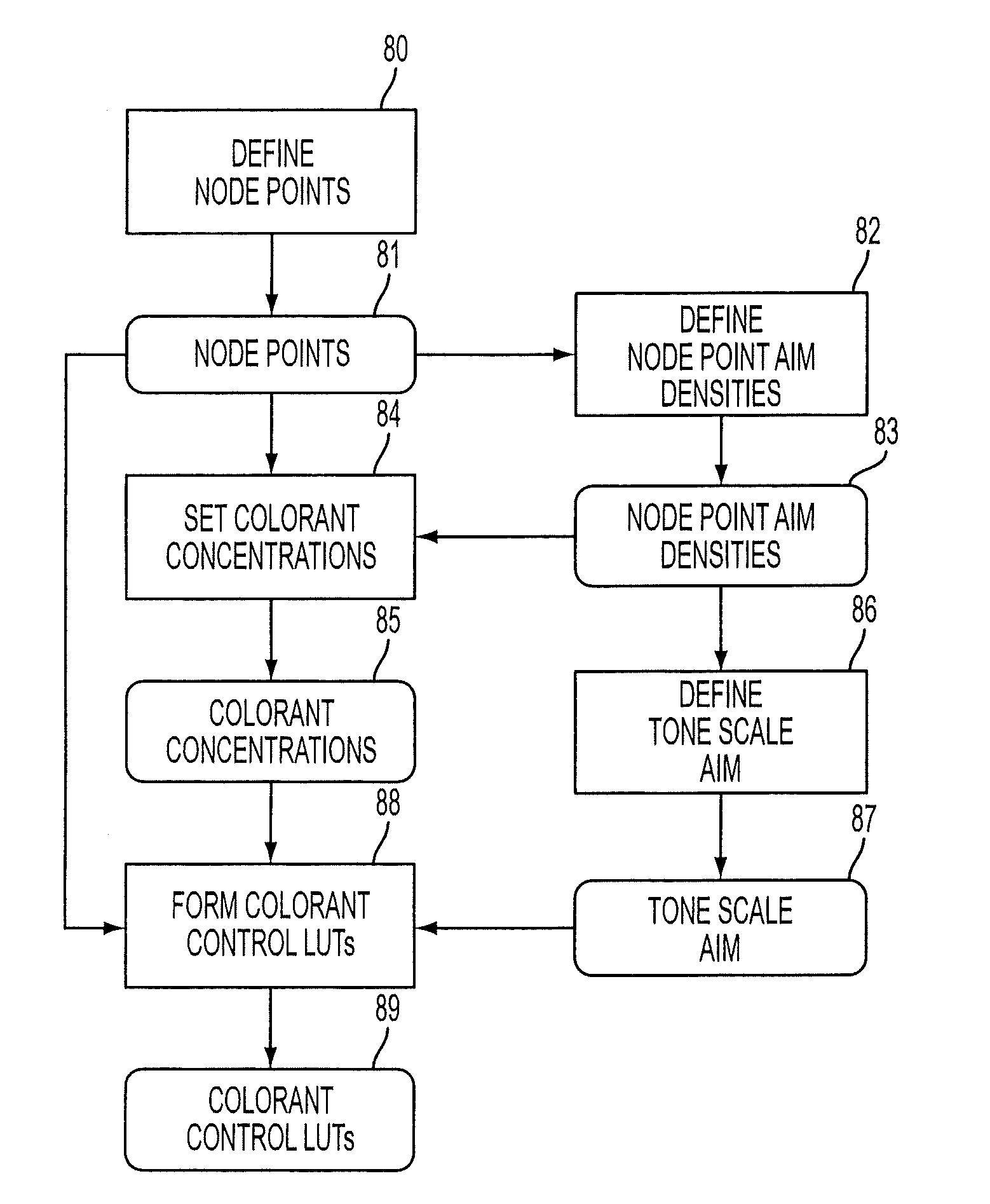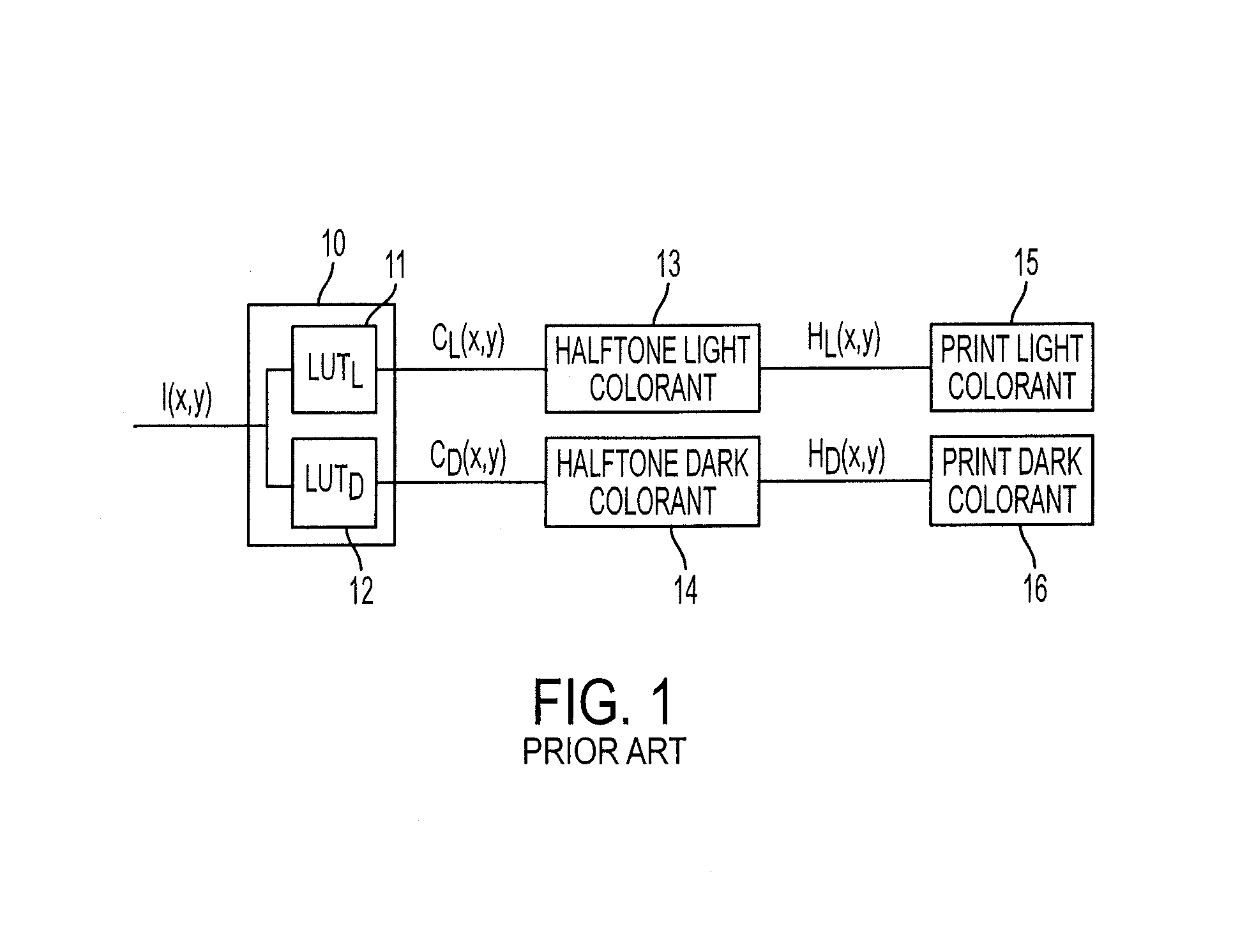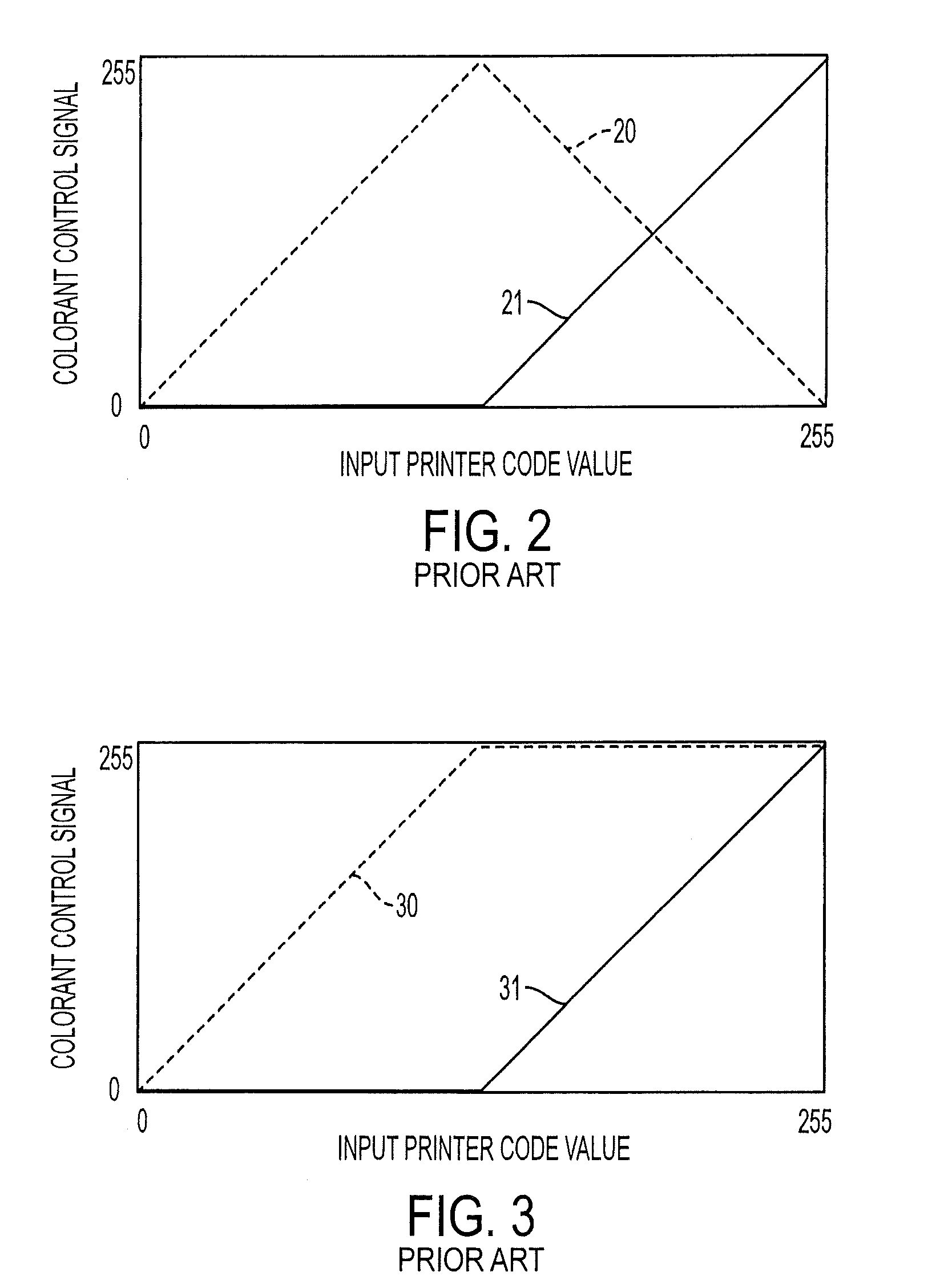Digital printing using similar colorants
a technology of colorants and digital printing, applied in the field of digital printing, can solve the problems of affecting the quality of the reproduced image, the appearance of grainy, and the inability to achieve the desired effect, and achieve the effect of avoiding contouring artifacts, smooth output response, and better behavior
- Summary
- Abstract
- Description
- Claims
- Application Information
AI Technical Summary
Benefits of technology
Problems solved by technology
Method used
Image
Examples
Embodiment Construction
[0042]The present invention represents a method for printing an input digital image on a digital printer having a set of colorants, wherein the set of colorants includes at least one set of similar colorants including two or more of the colorants having substantially the same color but different densities. In a preferred embodiment of the present invention, the printer is an inkjet printer. However, it will be recognized that the same method could be applied to other types of printers as well. The present invention overcomes the disadvantages of the prior art configurations that were discussed above with reference to FIG. 7 using a process that includes setting the colorant concentrations for the two or more colorants, together with a novel method for forming colorant control look-up tables to provide a smooth output response. The method described herein can be applied to each set of similar colorants used in a particular printer. For example an inkjet printer can have a set of ligh...
PUM
| Property | Measurement | Unit |
|---|---|---|
| densities | aaaaa | aaaaa |
| concentrations | aaaaa | aaaaa |
| color | aaaaa | aaaaa |
Abstract
Description
Claims
Application Information
 Login to View More
Login to View More - R&D
- Intellectual Property
- Life Sciences
- Materials
- Tech Scout
- Unparalleled Data Quality
- Higher Quality Content
- 60% Fewer Hallucinations
Browse by: Latest US Patents, China's latest patents, Technical Efficacy Thesaurus, Application Domain, Technology Topic, Popular Technical Reports.
© 2025 PatSnap. All rights reserved.Legal|Privacy policy|Modern Slavery Act Transparency Statement|Sitemap|About US| Contact US: help@patsnap.com



